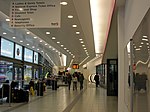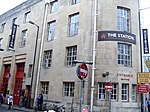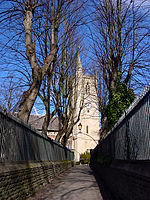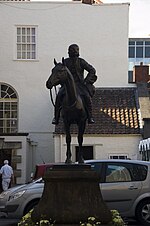Avon House, Bristol
Buildings and structures completed in 1972Buildings and structures in BristolCounty halls in EnglandUse British English from April 2022

The Bristol City Centre (Haymarket) Hotel, formerly known as Avon House, is an 18-storey building, one of the tallest structures in central Bristol, England. It is situated adjacent to The Bearpit roundabout.
Excerpt from the Wikipedia article Avon House, Bristol (License: CC BY-SA 3.0, Authors, Images).Avon House, Bristol
The Haymarket, Bristol Broadmead
Geographical coordinates (GPS) Address Nearby Places Show on map
Geographical coordinates (GPS)
| Latitude | Longitude |
|---|---|
| N 51.459 ° | E -2.592 ° |
Address
The Haymarket
BS1 3LR Bristol, Broadmead
England, United Kingdom
Open on Google Maps









